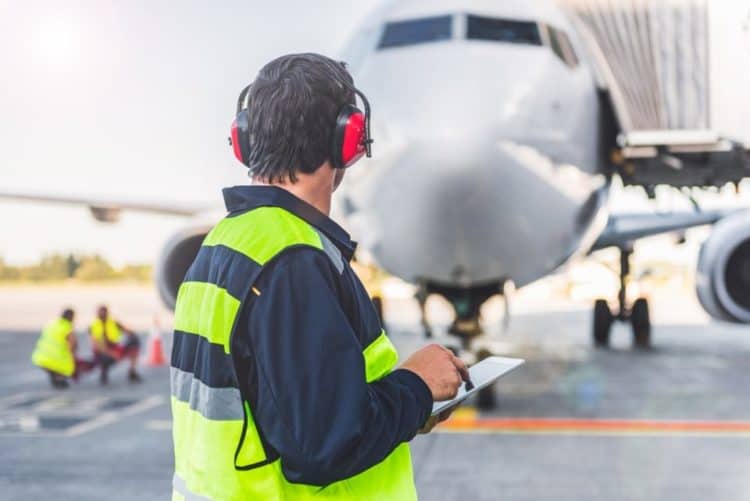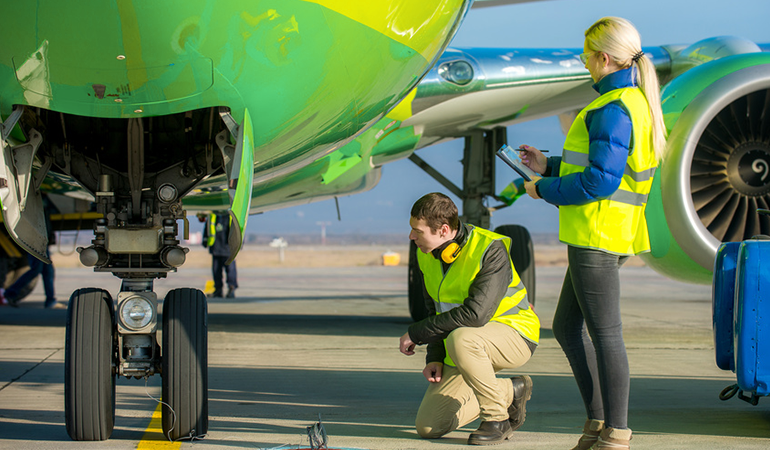Purchasing a used private jet in Germany is a complex process that demands meticulous attention to detail, thorough inspection, and adherence to stringent regulatory standards. Whether you are acquiring your first aircraft or expanding an existing fleet, conducting a comprehensive inspection is crucial to ensure safety, reliability, and value for your investment. This detailed guide provides an inspection checklist tailored specifically for purchasing a used private jet in Germany, covering essential aspects from documentation review to physical inspection and compliance verification.
1. Initial Research and Preparation

Before diving into the inspection process, it’s essential to conduct thorough research and preparation:
- Define Requirements: Determine your specific needs regarding aircraft size, range, performance capabilities, and amenities.
- Budget Considerations: Establish a budget that not only covers the purchase price but also includes ongoing maintenance, insurance costs, and operational expenses.
- Consult Experts: Seek advice from aviation consultants, aircraft brokers, or maintenance professionals who specialize in private jet acquisitions in Germany.
2. Documentation Review
Commence the inspection by meticulously reviewing all pertinent documentation related to the aircraft:
- Maintenance Records: Obtain and thoroughly review maintenance logs and records detailing the aircraft’s complete service history. This should include records of inspections, repairs, modifications, and compliance with airworthiness directives.
- Ownership History: Verify the aircraft’s ownership history, including previous operators and any incidents or accidents it may have been involved in.
- Airworthiness Certificates: Ensure that the aircraft holds valid airworthiness certificates issued by the European Union Aviation Safety Agency (EASA) or the Luftfahrt-Bundesamt (LBA), confirming compliance with German and European aviation regulations.
- Logbooks: Review engine logbooks, avionics records, and component overhaul histories to assess the overall condition and operational status of the aircraft.
3. Physical Exterior Inspection
Conduct a thorough examination of the aircraft’s exterior to assess its condition and structural integrity:
- Airframe Condition: Inspect all exterior surfaces, including wings, fuselage, tail, and control surfaces, for signs of corrosion, dents, or damage.
- Paint and Finish: Evaluate the quality of the paint and exterior finish for any signs of fading, peeling, or discoloration that may indicate age or inadequate maintenance.
- Windows and Seals: Check windows, seals, and windshield for cracks, chips, or signs of wear that could affect visibility and cabin pressurization.
- Landing Gear: Inspect landing gear components, including tires, brakes, struts, and hydraulic systems, for wear, leaks, or damage.
4. Interior Inspection
Assess the interior of the aircraft to ensure comfort, functionality, and overall condition:
- Cabin Condition: Evaluate the cleanliness and condition of the cabin interior, including upholstery, carpeting, cabinetry, and decorative finishes.
- Amenities: Verify the functionality of amenities such as seating configurations, in-flight entertainment systems, Wi-Fi connectivity, galley equipment, and lavatory facilities.
- Storage Space: Check the availability and condition of storage compartments, closets, and cabinetry for accommodating passenger luggage and personal belongings.
- Cabin Pressurization: Test cabin pressurization systems to ensure they maintain a comfortable and safe environment during flight operations.
5. Avionics and Systems
Evaluate the aircraft’s avionics and onboard systems to ensure they meet operational requirements and comply with regulatory standards:
- Avionics Suite: Inspect avionics equipment, including navigation, communication, and autopilot systems, to verify functionality and compatibility with current airspace regulations.
- Electrical Systems: Check electrical wiring, panels, and components for proper installation, condition, and operational status.
- Environmental Systems: Test heating, ventilation, air conditioning (HVAC), and pressurization systems to ensure they function effectively and maintain cabin comfort.
- Emergency Systems: Verify the availability, condition, and accessibility of emergency equipment such as fire extinguishers, emergency exits, and life-saving devices.
6. Engine and Propulsion Systems
Assess the aircraft’s propulsion systems to ensure reliability, performance, and compliance with safety standards:
- Engine Condition: Review engine maintenance logs and inspection reports to assess the condition of engines, including recent overhauls, repairs, or component replacements.
- Propellers or Jet Engines: Depending on the aircraft type, evaluate propeller condition, blade integrity, and overall performance. For jet engines, verify thrust ratings and fuel efficiency.
- Fuel Systems: Inspect fuel tanks, lines, pumps, and filters for leaks, corrosion, and compliance with fuel quality standards specified by EASA or LBA.
7. Operational and Performance Checks
Conduct operational checks and performance assessments to validate the aircraft’s capabilities and readiness for flight operations:
- Ground Run-Up: Perform a ground run-up to test engine performance, fuel system operation, and responsiveness under simulated flight conditions.
- Flight Test (If Possible): Schedule a test flight, if permissible, to evaluate flight characteristics, handling qualities, and avionics functionality in actual flight operations.
- Weight and Balance: Verify weight and balance calculations to ensure compliance with operational limits and safety requirements specified for the aircraft.
8. Inspection by Qualified Technicians
Engage qualified aviation maintenance technicians or inspectors to conduct a thorough pre-purchase inspection:
- Structural Integrity: Perform non-destructive testing (NDT) and structural inspections to detect hidden defects, fatigue cracks, or corrosion within airframe structures.
- Systematic Checks: Utilize specialized tools and equipment to assess critical systems, components, and subsystems installed on the aircraft.
- Compliance Verification: Ensure that the aircraft meets regulatory requirements and airworthiness directives (ADs) issued by the manufacturer, EASA, or LBA.
9. Post-Inspection Evaluation and Negotiation
After completing the inspection, evaluate findings and prepare for negotiation with the seller or aircraft broker:
- Review Inspection Reports: Thoroughly review comprehensive inspection reports and findings provided by qualified inspectors or maintenance technicians.
- Negotiation Strategy: Utilize inspection findings to negotiate adjustments to the purchase price, repair agreements, or maintenance requirements to address identified issues.
- Decision Making: Make an informed decision based on the overall condition, operational capabilities, and value proposition of the aircraft relative to your requirements and budget.
10. Legal and Regulatory Compliance
Ensure compliance with legal and regulatory requirements before finalizing the purchase transaction:
- Purchase Agreement: Draft and finalize a detailed purchase agreement outlining terms, conditions, and responsibilities of both buyer and seller.
- Registration and Transfer: Arrange for aircraft registration and transfer of ownership with EASA, LBA, or appropriate aviation authorities in Germany.
- Insurance Coverage: Obtain comprehensive insurance coverage for the aircraft, including hull, liability, and other relevant policies to mitigate risks and protect against potential liabilities.
Conclusion
Purchasing a used private jet in Germany demands a thorough and systematic approach to inspection, compliance verification, and negotiation to ensure a safe and satisfactory acquisition. By following this comprehensive inspection checklist, prospective buyers can confidently assess the condition, performance capabilities, and value proposition of a used private jet before making a final decision. Engaging with qualified aviation professionals, conducting detailed inspections, and adhering to regulatory standards are essential steps to mitigate risks and maximize the investment in private aviation. Whether for personal use or business travel, a well-executed inspection process establishes the foundation for a successful ownership experience in the dynamic realm of private jets in Germany.
